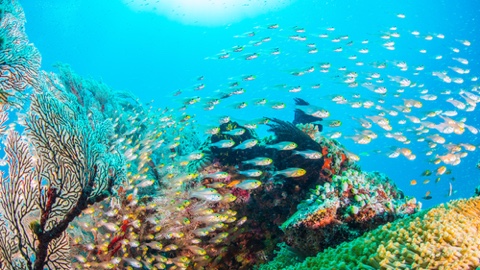
A new project out of DARPA’s Biological Technologies Office – The Persistent Aquatic Living Sensors (PALS) program – will “study natural and modified organisms to determine which ones could best support sensor systems that detect the movement of manned and unmanned underwater vehicles.” Researchers will investigate marine organisms’ responses to the presence of such vehicles, and characterize the resulting signals or behaviors so they can be captured, interpreted, and relayed by a network of hardware devices.
“The U.S. Navy’s current approach to detecting and monitoring underwater vehicles is hardware-centric and resource intensive. As a result, the capability is mostly used at the tactical level to protect high-value assets like aircraft carriers, and less so at the broader strategic level,” Program manager Lori Adornato said. “If we can tap into the innate sensing capabilities of living organisms that are ubiquitous in the oceans, we can extend our ability to track adversary activity and do so discreetly, on a persistent basis, and with enough precision to characterize the size and type of adversary vehicles.”
The evaluation of the sensing capabilities of sea life is only the first step for the researchers. Hardware, software, and algorithms to translate organism behavior into actionable information and then communicate it to end users will need to be developed. The sensing systems must also discriminate between target vehicles and other sources of stimuli, such as debris and other marine organisms, to limit the number of false positives.
DARPA did emphasize that not every creature will be studied, specifically those who are protected or on endangered lists, such as many sea-dwelling mammals. “DARPA expressly forbids the inclusion of endangered species and intelligent mammals, such as dolphins and whales, from researchers’ proposals on the PALS program,” said Jared Adams, DARPA spokesman.
